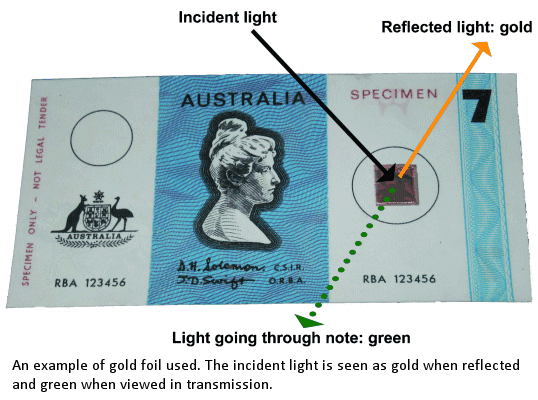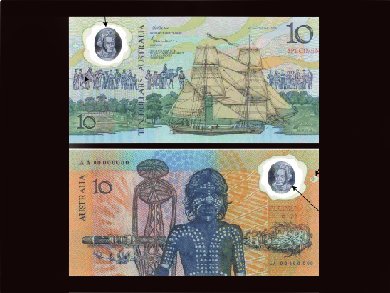Ensuring Crime Doesn’t Pay
Counterfeiting money is the “second oldest profession in the world”—a profession that truly took off with the introduction of paper money. In order to spoil things for counterfeiters, Australia introduced the world’s first banknotes made of plastic in 1988. David H. Solomon at the University of Melbourne was part of an interdisciplinary team of scientists that developed these bills. In an essay in the journal Angewandte Chemie, he and co-author Emma L. Prime trace the technically challenging route to the development of the plastic banknote.
Materials That Can Not be Photographed
In 1966, Australia converted its currency from the British Pound to the decimal system. The new banknotes distributed by the Reserve Bank of Australia (RBA) were at the time the most counterfeit-proof bills in the world. However, it was less than a year before counterfeiters tried to put the first forged $10 bills into circulation—ingeniously printed on common office paper. The Governor of the RBA, H.C. (Nugget) Coombs, thus initiated a project to secure banknotes against counterfeiters.
.gif)
Solomon remembers a photographic expert on the commission, who countered nearly every suggestion with the words, “if you can see it, you can photograph it”—meaning that it was always possible to separate the colors of a banknote, produce printing plates, and forge the bills. “Our idea was to develop materials that could not be photographed,” reports Solomon, “which eventually led to the use of clear plastic films as a substrate in place of paper.” A banknote with a transparent window made of a plastic film is a simple but highly effective security feature. The material selected was a polyethylene/polypropylene/polyethylene film. Two or three of these three-layer films were combined in a hot lamination process to attain the required thickness of 80 to 90 µm.
Diffraction Grating
Another security feature is a small picture in the transparent window that is designed to produce a complex diffraction grating through the diffraction and interference of light. To protect the diffraction grating and to achieve the right “feel”, the entire banknote then had to be covered with a clear polyurethane coating. The team was able to develop a production process that put everything together in a single run: lamination, application of white ink, printing the pattern, hot embossing the diffraction grating, application of the clear coat, and cutting. In stringent tests, the sample banknotes proved to be more durable than the paper banknotes in circulation – to such an extent that the higher production costs were easily balanced out.
In 1988, the RBA first introduced a limited number of a special $10 banknote for the Australian bicentennial celebration (see picture). Between 1992 and 1996, the Note Issue Department then replaced all Australian paper banknotes with plastic ones. “Since that time, other countries have adopted our technology,” says Solomon. “In Romania, New Zealand, and Brazil, the counterfeiting rate went down by over 90 % upon introduction of plastic bills.”
- Australia’s Plastic Banknotes: Fighting Counterfeit Currency
E. Prime, D. Solomon, Angew. Chem. Int. Ed. 2010, 49, 3726 — 3736.
DOI: 10.1002/anie.200904538




